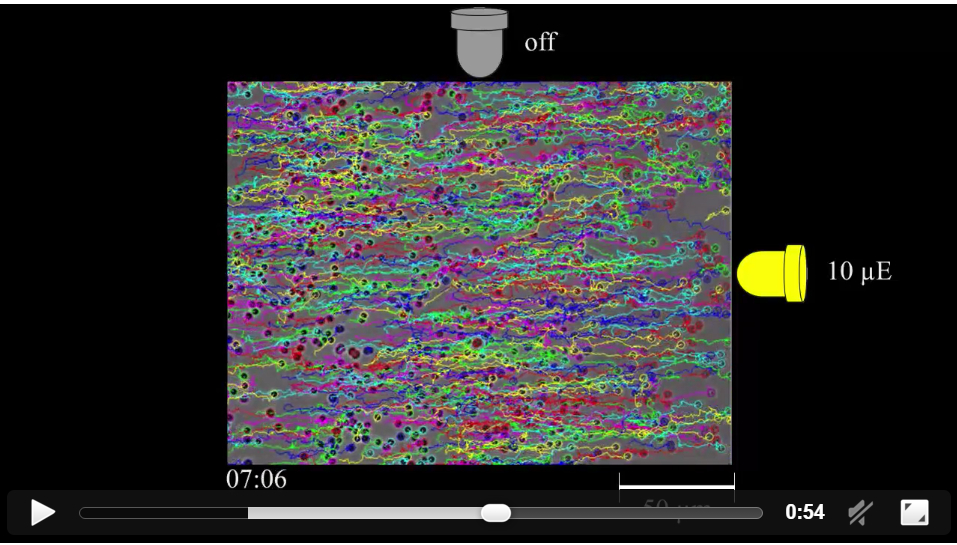RECENT PUBLICATIONS: Cyanobacteria use micro-optics to sense light direction
An INEB researcher recently published an article in the journal eLife, available since February 9th 2016. The article is entitled "Cyanobacteria use micro-optics to sense light direction" and is authored by Nils Schuergers, Tchern Lenn, Ronald Kampmann, Markus V Meissner, Tiago Esteves, Maja Temerinac-Ott, Jan G Korvink, Alan R Lowe, Conrad W Mullineaux and Annegret Wilde.

Motility of Synechocystis cells under different illumination regimes. The video gives a schematic overview of the experimental set-up, followed by movement of cells in a projected light gradient, and with oblique illumination from two orthogonal directions, and then from both directions simultaneously. In each case, the raw video data is followed by the same movie clip with the tracks of cells superimposed. Time is indicated in minutes.
Bacterial phototaxis was first recognized over a century ago, but the method by which such small cells can sense the direction of illumination has remained puzzling. The unicellular cyanobacterium Synechocystis sp. PCC 6803 moves with Type IV pili and measures light intensity and color with a range of photoreceptors. Here, we show that individual Synechocystis cells do not respond to a spatiotemporal gradient in light intensity, but rather they directly and accurately sense the position of a light source. We show that directional light sensing is possible because Synechocystis cells act as spherical microlenses, allowing the cell to see a light source and move towards it. A high-resolution image of the light source is focused on the edge of the cell opposite to the source, triggering movement away from the focused spot. Spherical cyanobacteria are probably the world’s smallest and oldest example of a camera eye.
Media coverage of the publication available www.bbc.com/news/science-environment


